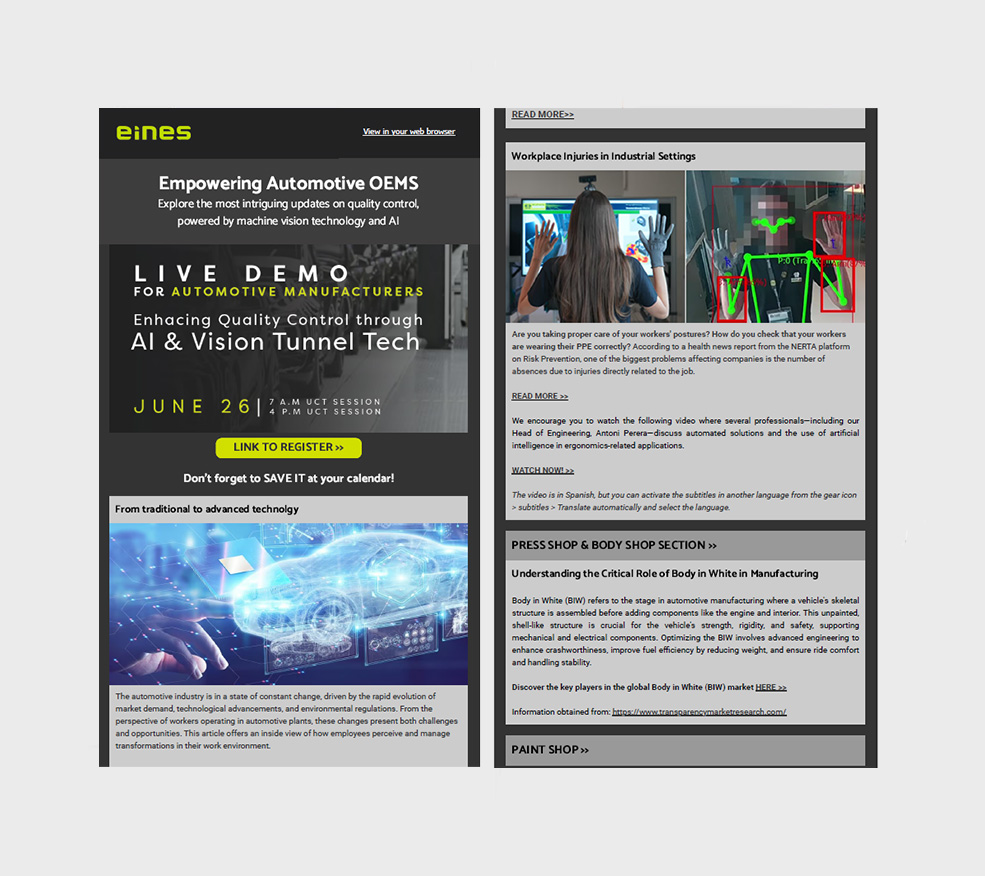Machine Vision Miths…
One of the biggest myths surrounding the implementation of machine vision systems in assembly lines is that they slow down production. However, current technological advances prove otherwise: it is entirely possible to maintain cycle times in assembly processes without compromising quality.
Modern vision solutions are designed to operate in parallel with the production workflow, using in-motion inspection synchronized with the line pace. These systems leverage high-speed cameras, integrated sensors, and decision-making algorithms that process images in milliseconds—ensuring error detection doesn’t interfere with assembly.
How Machine Vision operates?
In most solutions developed by Eines, the cameras operate in a streamlined way: they capture images only when triggered by a system signal. This process is coordinated by an encoder, which converts the movement of the conveyor (carrying the car body) into an electrical signal. This signal is read by the PLC, which then tells the cameras the exact moment to capture each image.
Once captured, the images are processed through computer vision systems to identify potential defects, analyze their behavior, and accurately determine their position. When necessary, AI algorithms are used to classify these defects.
Use Case: Paint Inspector Tunnel
A standout example is the ESFI system, which captures approximately 40,000 images per car body. These images enable in-depth analysis of defect patterns, allowing for effective detection, localization, and AI-powered classification.
Practical examples include presence/absence verification, surface inspection, metrology, and even OCR reading. These inspections are performed continuously and only trigger alerts when deviations are detected—minimizing unnecessary interventions.
Moreover, integrating machine vision with MES and PLC systems provides full traceability of every assembled unit, strengthening quality control without sacrificing productivity. The ability to store and analyze captured data also helps identify bottlenecks or dynamically reassign resources.
In short, machine vision in automotive assembly is no longer a barrier to efficiency. On the contrary, it’s a powerful enabler that boosts performance, reduces human error, and raises the quality standard—all without compromising production speed.







